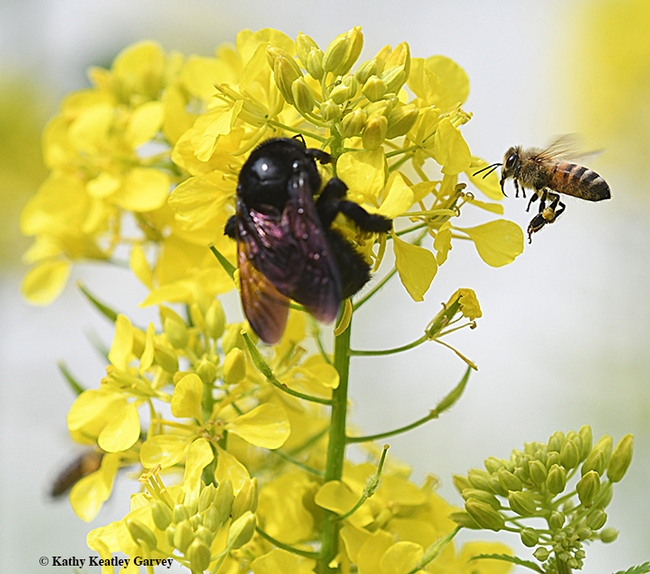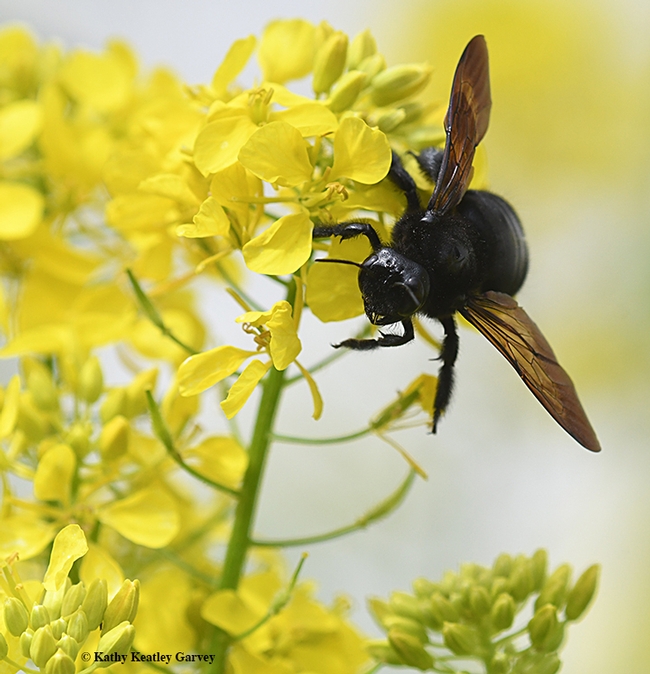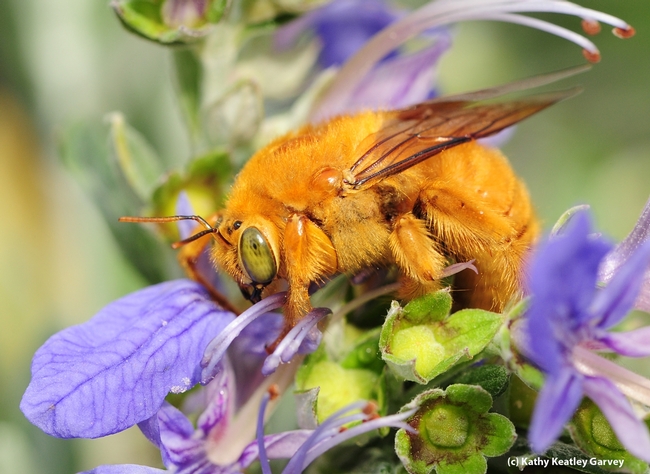Remember the biblical story about David and Goliath? How young David, the underdog, defeats a Philistine giant?
Sometimes you think the same kind of battle will occur in nature when a honey bee, Apis mellifera, encounters a much larger carpenter bee, the Valley carpenter bee, Xylocopa varipuncta.
We recently spotted a female Valley carpenter bee foraging on a mustard blossom, while her smaller cousin, the honey bee buzzed in, hoping to share. Both belong to the order Hymenoptera and the family, Apidae. The carpenter bee is a native. The honey bee is not.
Girls! Girls!
What happened? The honey bee discreetly moved out of the way and let the carpenter bee claim her bounty.
California has three species of carpenter bees.
- The biggest is the Valley carpenter bee, Xylocopa varipuncta. It's about an inch long. The female is solid black, while the male, commonly known as "the teddy bear bee," is a green-eyed blond. Why teddy bear? It's fuzzy and does not sting--or as the late Robbin Thorp (1933-2019), UC Davis emeritus professor of entomology, used to say: "Boy bees don't sting."
- The second largest is the California carpenter bee or Western carpenter bee, Xylocopa californica, often found in the mountain foothill areas of northern and southern California. It's known for its distinctive distinctive bluish metallic reflections on the body, Thorp says. The females have dark smoky brown wings.??
- The smallest is the foothill or mountain carpenter bee, Xylocopa tabaniformis orpifex. The females are black with light smoky-colored wings. The male has bright yellow marks on the lower part of its face and some yellow hairs on the top front of its thorax.
Still my favorite carpenter bee is the male X. varipuncta, the green-eyed blond. You don't see it as much as the female of the species, but wow! Now to photograph them in the same picture...
Attached Images:

A honey bee comes faces to face with a Valley carpenter bee on a mustard blossom. The Valley carpenter bee is native to the United States, while the honey bee is native to Europe. (Photo by Kathy Keatley Garvey)

The Valley carpenter bee spreads her wings, claiming the entire flower. (Photo by Kathy Keatley Garvey)

This is the male Valley carpenter bee, Xylocopa varipuncta, also known as "the teddy bear bee." (Photo by Kathy Keatley Garvey)